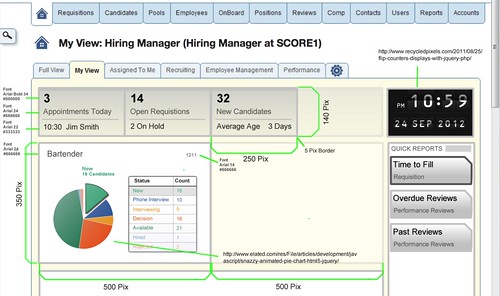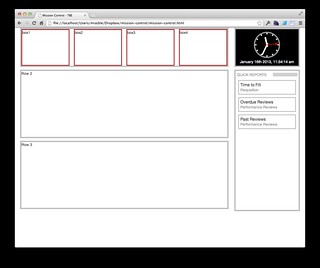Developing with AngularJS - Part I: The Basics
There's many, many different introductions to AngularJS available on the internet. This article is not another introduction, but rather a story about my learning experience. It all started way back in January of this year. I was working as a UI Architecture Consultant at Taleo/Oracle, my client for the last 21 months. My gig there ended last month, but they agreed to let me publish a series of articles about the knowledge I gained.
Project Background
The Director of Product Management had been working on the concepts for a new project - codenamed "Visual MyView". Below is a mockup he created for our kickoff meeting on January 4th.
From his original email about the above mockup:
The intent here is that one of the columns has rows that have a similar width. The rows could be dragged and dropped into a different order – or potentially the two columns could also be reordered. The rows will basically be comprised of similar widgets. You can see in the mockup how the first two rows might look – and sample widgets. The widgets shown can be configured by the end user, as well as the order in which they are displayed. Other requirements given to us were the following.
- Row 1 is comprised of 'summary' widgets that are 'todo' items. Reviews needing done – approvals required – etc.
- Row 2 will be a graph row – having graphs and charts to display information – larger squares will build this row.
- Row 3's content was not determined yet.
I started the initial layout with static HTML and CSS and had a wireframe to show by mid January.
By the end of January, we'd renamed the project to My Dashboard and had a working prototype using CoolClock and moment.js for the clock in the top right, AngularJS to display widget data, jQuery UI for drag-n-drop of rows and widgets, Bootstrap's Carousel for holding charts and Highcharts for rendering charts.
[Read More]


